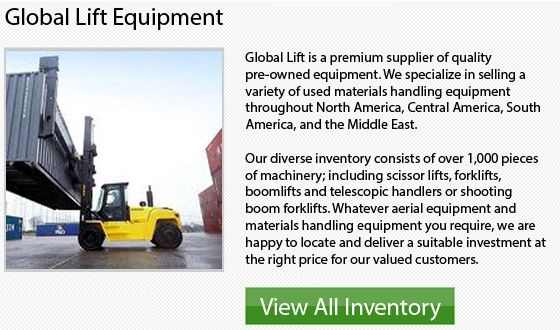
There are 7 different classifications of lift trucks as determined by the Industrial Truck Association or ITA. These classes are divided into the type of work environment; rough or smooth surfaces, indoors, outdoors and narrow aisle; whether the operator is standing or sitting down; by the type of engine; and lastly the characteristics of the machine, regarding the maximum grade and tire type. Some of the classes are further sub-divided by operating characteristics. Below are the following classifications of lift trucks:
Class 1 Forklifts: these machinery consist of electric motor trucks which use either air filled or pneumatic tires or cushion tires. The Class 1 lift trucks also comprise 4 lift codes, or subcategories that are:
Lift Code 1: Stand-up, counterbalanced rider model.
Lift Code 4: 3-Wheel electric sit-down types.
Lift Code 5: Cushion Tire sit down, counterbalanced rider
Lift Code 6: This grouping included pneumatic tire units, counterbalanced rider, and sit-down rider units.
Category 2 Forklifts: Class 2 forklifts consist of narrow aisle electric trucks with solid tires.
Class 3 Forklifts: Class 3 forklifts include electric hand trucks and hand/rider trucks with solid tires.
Category 4 Forklifts: Class 4 forklifts are the IC or internal combustion units. These are sit down rider units with cushion tires. Generally, they are suitable for indoor use and on hard surfaces.
Category 5 Forklifts: Class 5 is Internal Combustion Engine sit down rider models outfitted with pneumatic tires. Typically, these models are ideal for working on rough surfaces outside or on areas with significant inclines.
Class 6 Forklifts: The Class 6 lift trucks are either internal combustion powered or electric models. These ride-on models could tow at least 1000 pounds. This particular class is engineered and designed to tow cargo rather than lift it.
Category 7 Forklifts: Class 7 just included rough terrain models with pneumatic tires. The Class 7 forklifts are powered by diesel engines and are almost exclusively used outside.
These classes were designed to keep the large field of lift trucks separated and organized. In order to get their work completed, various working environments depend on various categories. Forklifts are rather particular in their lifting and loading capacities. Their different types of engines and tires are made for particular operation. In order to choose the best forklift to meet all your needs and to complete your jobs, do some research to determine exactly what you will require from your specific unit. By talking to a few respectable dealers and making time to explore your alternatives, you would be able to pick the appropriate machinery.